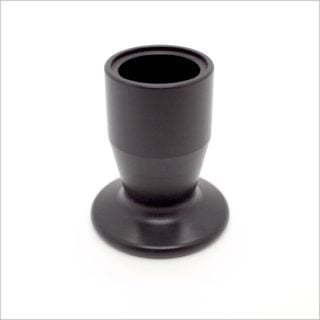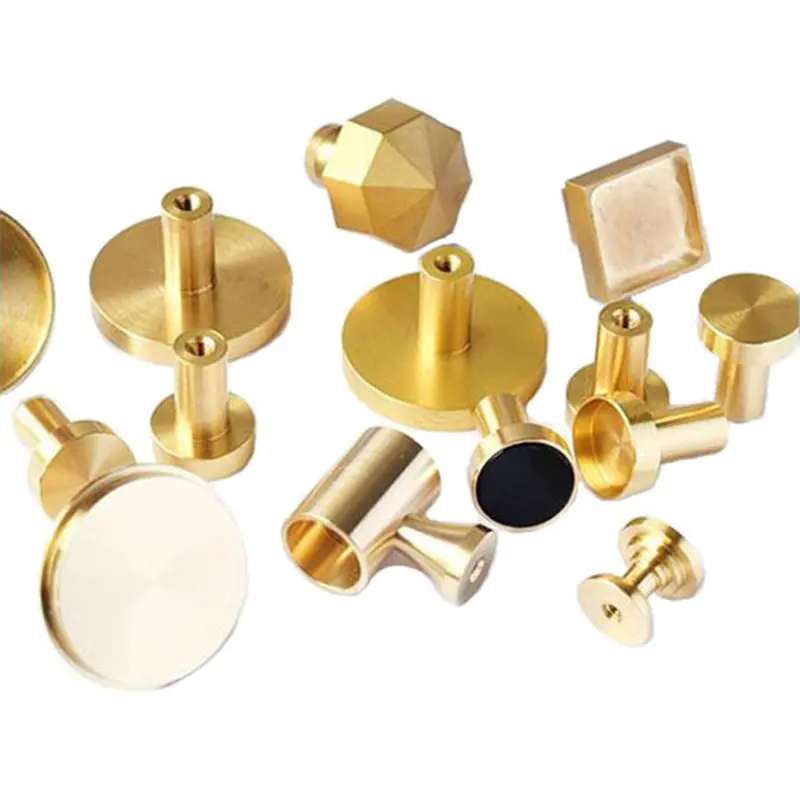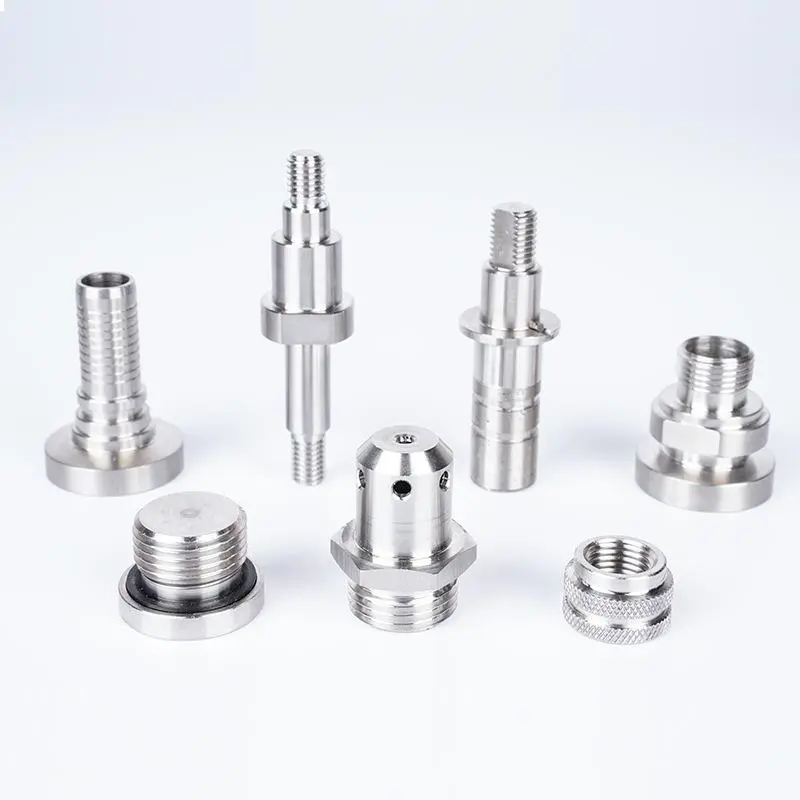Why CNC Machining Parts Are Revolutionizing Manufacturing: A Comprehensive Guide
Published Time:
2025-08-29
Why CNC Machining Parts Are Revolutionizing Manufacturing
Manufacturing has undergone a significant transformation over the past few decades, and at the forefront of this revolution is CNC (Computer Numerical Control) machining. This technology has not only enhanced precision and efficiency but has also changed the landscape of manufacturing industries around the globe. In this article, we will explore the various aspects of CNC machining parts and how they are revolutionizing manufacturing.
What is CNC Machining?
CNC machining is a manufacturing process in which pre-programmed computer software dictates the movement of factory tools and machinery. This technology can control a variety of complex machinery, including grinders, lathes, mills, and CNC routers. The primary advantage of CNC machining over traditional machining methods is its ability to produce parts with high precision and repeatability.
The process begins with the creation of a 3D model using CAD (Computer-Aided Design) software. This model is then converted into a format readable by the CNC machine, allowing the equipment to execute the desired operations automatically. The result? Parts that meet exact specifications, reduced waste, and faster production times.
Benefits of CNC Machining Parts in Manufacturing
The adoption of CNC machining parts brings forth a myriad of advantages that have made it a preferred choice for manufacturers worldwide. Here are some of the key benefits:
Precision and Accuracy
One of the most significant advantages of CNC machining is the high level of precision it offers. Traditional machining methods can be prone to human error, whereas CNC machines operate based on programmed instructions, ensuring that parts are manufactured according to exact specifications. This level of accuracy is particularly critical in industries such as aerospace and automotive, where tolerances can be as tight as a few micrometers.
Increased Efficiency
CNC machining significantly cuts down on production time. With minimal human intervention, machines can operate continuously, minimizing downtime and maximizing output. This efficiency is ideal for high-demand industries that require large quantities of components.
Enhanced Safety
Automating the machining process also enhances safety in the workplace. CNC machines are designed to handle hazardous tasks, reducing the risk of accidents and injuries associated with manual machining processes.
Applications of CNC Machining Across Industries
CNC machining is versatile and applicable across various sectors. Here are some of the industries that benefit immensely from this technology:
Aerospace Industry
In the aerospace sector, precision is non-negotiable. CNC machining enables manufacturers to produce lightweight, durable components that meet stringent safety standards while maintaining high performance.
Automotive Industry
The automotive industry relies heavily on CNC machining for producing parts ranging from engine blocks to intricate interior components. The ability to produce complex geometries with high accuracy allows automotive manufacturers to enhance vehicle performance and aesthetics.
Medical Equipment Manufacturing
In the medical field, CNC machining is used to manufacture surgical instruments, implants, and prosthetics. The ability to create customized components tailored to individual patient needs is a game-changer in healthcare.
Electronics Manufacturing
CNC machining is also widely used in the electronics industry for producing housings, enclosures, and circuit boards. The precision involved ensures that electronic components fit perfectly, minimizing the risk of malfunction.
Technological Advancements in CNC Machining
The evolution of CNC machining technology is ongoing, with advancements that continue to improve efficiency and capabilities. Some notable innovations include:
Multi-Axis Machining
While traditional CNC machines operate on three axes, modern multi-axis machines allow for movement along five or more axes. This capability enables manufacturers to create complex geometries in a single setup, eliminating the need for multiple setups and reducing overall production time.
Integration with IoT and AI
The integration of Internet of Things (IoT) technology and Artificial Intelligence (AI) into CNC machining processes allows for real-time monitoring and predictive maintenance. This integration enhances operational efficiency and reduces downtime by anticipating potential issues before they arise.
3D Printing and CNC Machining
The combination of CNC machining with 3D printing technology is gaining traction. Manufacturers can use CNC machines to refine 3D-printed components, achieving a level of precision that traditional 3D printing methods cannot provide alone.
Customization and Flexibility in Manufacturing
One of the outstanding features of CNC machining is its capacity for customization. Manufacturers can easily adjust their CNC programs to produce unique parts as needed. This flexibility is particularly beneficial for industries requiring small batch production or custom components.
Short Run Production
CNC machining allows for efficient short-run production, which is ideal for companies needing to produce components in smaller quantities without significant setup costs. This adaptability in manufacturing aligns with the increasing demand for customized solutions in today’s market.
Rapid Prototyping
CNC machining plays a crucial role in rapid prototyping, enabling manufacturers to create prototypes quickly and accurately. This capability allows for faster product development cycles, enabling companies to bring products to market more swiftly.
Cost-Effectiveness of CNC Machining Parts
While the initial investment in CNC machinery can be substantial, the long-term cost savings are noteworthy. Here are a few ways CNC machining proves to be cost-effective:
Reduced Labor Costs
With automation, the need for manual labor is minimized, translating into lower labor costs. Additionally, the reduced likelihood of errors means less material waste and lower overall production costs.
Minimized Material Waste
CNC machining is highly efficient in material usage. By precisely cutting materials to specifications, manufacturers can significantly reduce waste, leading to substantial cost savings.
Scalability of Production
CNC machining facilitates easy scalability. As demand increases, manufacturers can quickly adjust their production capacities without significant additional investments in equipment or labor.
The Future of CNC Machining in Manufacturing
As technology continues to advance, the future of CNC machining looks promising. The potential for further integration with AI, machine learning, and other emerging technologies will likely lead to even greater efficiencies and capabilities.
Smart Factories
The push towards smart factories means that CNC machines will become increasingly interconnected, allowing for streamlined operations and enhanced data analytics. This evolution will enable manufacturers to make informed decisions based on real-time data, further optimizing production processes.
Sustainability in Manufacturing
With a growing emphasis on sustainability, CNC machining will likely adopt practices that minimize environmental impact. This includes using eco-friendly materials and processes, along with energy-efficient machinery that reduces carbon footprints.
Frequently Asked Questions (FAQs)
1. What materials can be machined using CNC technology?
CNC machining can work with a variety of materials, including metals (aluminum, steel, brass), plastics, wood, and composites. The choice of material often depends on the specific application and required properties.
2. How does CNC machining compare to traditional machining?
CNC machining offers higher precision, efficiency, and consistency compared to traditional machining methods. It also reduces labor costs and material waste, making it a more cost-effective solution in many cases.
3. Can CNC machines be used for small production runs?
Yes, CNC machines are highly adaptable and can efficiently handle small production runs or custom components, making them suitable for industries that require flexibility.
4. What industries utilize CNC machining?
CNC machining is utilized across various industries, including aerospace, automotive, medical, electronics, and manufacturing, due to its versatility and precision.
5. What advancements can we expect in CNC machining technology?
Future advancements may include greater integration with AI and IoT, development of smarter machines, and enhanced capabilities for rapid prototyping and customization.
Conclusion
CNC machining parts are undeniably revolutionizing the manufacturing landscape. With unparalleled precision, efficiency, and adaptability, CNC technology is paving the way for innovations across various industries. As we look to the future, the continued evolution of CNC machining will likely unlock new possibilities, making it an indispensable tool for manufacturers striving for excellence and competitiveness in a rapidly changing market. By understanding and leveraging the benefits of CNC machining, businesses can position themselves at the forefront of this manufacturing revolution.
NewsCenter
Beijing Pafinal Precision Machinery Co., Ltd.
Email:sales@pafinal.com

Address: No. 239 Huanhe South Road, Tianjin Pilot Free Trade Zone (Airport Economic Zone), Tianjin
sales@pafinal.com:
Whatsapp:
在线客服添加返回顶部
图片alt标题设置: PAFINAL
表单验证提示文本: Content cannot be empty!
循环体没有内容时: Sorry,no matching items were found.
CSS / JS 文件放置地




 2025-10-03
2025-10-03

